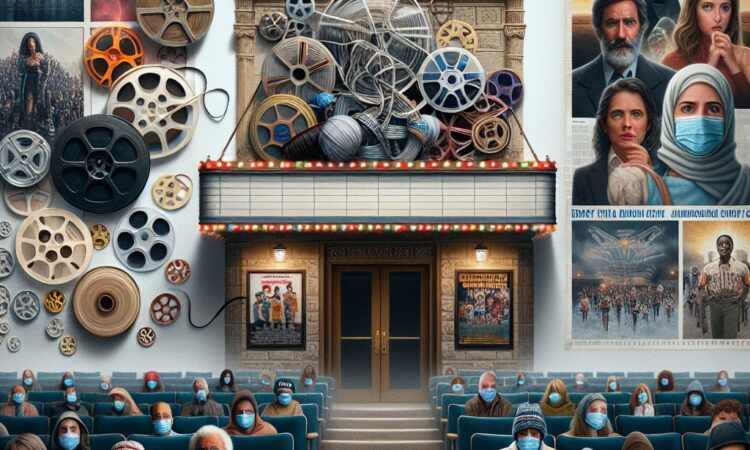The Challenges Facing the Cinema Industry in the Post-Pandemic Era
The COVID-19 pandemic has had a significant impact on the cinema industry. Cinemas have been closed, production has been disrupted, and audiences have been hesitant to return to theaters. The industry is now facing a number of challenges, including adapting to new viewing habits and finding ways to make films that are both commercially successful and artistically satisfying.
The closure of cinemas during the pandemic has forced the industry to explore alternative distribution methods. Streaming platforms have gained popularity, making it crucial for cinemas to adapt to changing consumer preferences. Cinema chains are now exploring partnerships with streaming services to release films simultaneously in theaters and online, reaching a wider audience and ensuring continued revenue. Additionally, hybrid release models that combine limited theatrical runs with early digital releases have emerged as a viable option in the post-pandemic era.
Production disruptions caused by the pandemic have posed challenges in delivering new content. Filmmakers have faced delays, increased costs, and logistical challenges. To overcome these obstacles, the industry has embraced innovative solutions such as virtual production techniques and remote shooting setups, enabling filmmakers to continue working while adhering to safety guidelines. These advancements have not only helped in completing unfinished projects but also opened up possibilities for more cost-effective and efficient production methods in the future.
In the pursuit of commercial success, the cinema industry must strike a balance between appealing to mainstream audiences and supporting artistic endeavors. The pandemic has resulted in a shift in audience preferences, with a greater demand for escapism, feel-good stories, and big-budget spectacles. However, it is important to ensure that artistic creativity and diversity are not compromised in the process. Filmmakers and studios must find ways to create commercially successful films that also push artistic boundaries and provide thought-provoking content.
Regaining the trust and confidence of audiences is paramount to the recovery of the cinema industry. Implementing strict health and safety measures, such as enhanced cleaning protocols, reduced capacity, and improved ventilation systems, is crucial to reassure moviegoers. Effective communication to address any concerns and promote the safety measures is equally important. Additionally, deploying innovative technologies, such as contactless ticketing and advanced seating arrangements, can provide a seamless and secure movie-watching experience for audiences.
In conclusion, the cinema industry faces numerous challenges in the post-pandemic era. Adapting to new viewing habits, striking a balance between commercial success and artistic fulfillment, and regaining audience trust are key hurdles that must be overcome. However, with innovation, creativity, and a commitment to ensuring a safe and enjoyable cinematic experience, the industry can rebuild and thrive in the new normal.

